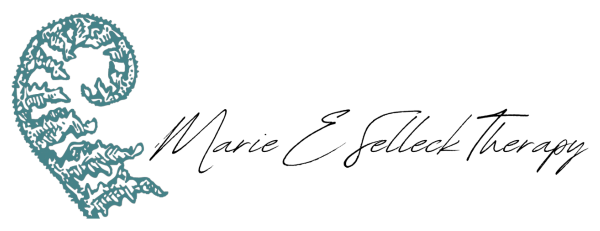When Anxiety Wears an Angry Mask: Why We Get Mad When We're Really Scared
You're running late for work. Traffic is terrible. Your heart pounds as you grip the steering wheel tighter. When someone cuts you off, you explode with road rage that surprises even you. Sound familiar?
That wasn't really anger. That was anxiety wearing a disguise.
The Hidden Connection
As a therapist, I see this pattern constantly. People come to me confused about their "anger problems," but when we dig deeper, we find anxiety and fear underneath.
Your brain doesn't always know the difference between fear and anger. Both emotions trigger the same fight-or-flight response. Both flood your system with stress hormones. Both make your heart race and your muscles tense. The main difference? Anger feels powerful. Anxiety feels vulnerable.
Why We Choose Anger Over Anxiety
Think about it this way: Would you rather feel strong and in control, or scared and helpless? Most of us unconsciously choose anger because it gives us the illusion of power. Anxiety makes us feel small and exposed. Anger makes us feel big and protected. Imagine yourself with anxiety and you feel your shoulders bend in and spine curl forward. Now imagine yourself angry and you notice your back straighten up, arms widen, and legs tense.
This switch happens so fast we barely notice it. Your anxious thoughts sound like: "What if I mess up this presentation?" But your angry thoughts sound like: "Why didn't they give me more time to prepare? This is unfair!"
Same underlying fear. Different emotional outfit.
The Anxiety-to-Anger Pipeline
Here's how it typically works:
Step 1: Something triggers your anxiety. Maybe it's planning for an upcoming trip, a social situation, or uncertainty about the future.
Step 2: Your body goes into alert mode. Heart rate increases, breathing gets shallow, muscles tense up.
Step 3: Your brain searches for a target. Instead of sitting with the uncomfortable feeling of anxiety, it looks for someone or something to blame.
Step 4: Anger takes over. Now you're mad at your boss, your partner, the slow internet, or the person walking too slowly in front of you.
The real problem? You never dealt with the original anxiety. You just transferred it to anger and probably hurt some relationships along the way.
Anger feels powerful. Anxiety feels vulnerable.
Common Anxiety Triggers That Show Up as Anger
Perfectionism: When things don't go exactly as planned, anxiety about failure can explode as anger at "incompetent" people around you.
Control issues: Feeling powerless creates anxiety, which often comes out as anger toward anyone who seems to have power over your situation.
Time pressure: Running late or feeling rushed triggers anxiety about consequences, which transforms into road rage or snapping at family members.
Social situations: Fear of judgment or rejection can show up as anger at social rules, other people's behavior, or feeling "forced" into uncomfortable situations.
Uncertainty: Not knowing what's coming next creates anxiety that often gets redirected as anger at people who seem more confident or prepared.
Breaking the Pattern
The good news? Once you recognize this pattern, you can change it. Here's how:
Pause and check in with your body. When you feel anger rising, stop for ten seconds. Notice your physical sensations. Tight chest? Rapid heartbeat? Shallow breathing? These might be anxiety signals, not anger signals.
Ask yourself: "What am I really afraid of right now?" Often, the honest answer reveals the anxiety underneath. Maybe you're afraid of looking incompetent, being rejected, or losing control.
Name the real emotion. Say to yourself: "I'm feeling anxious about this deadline" instead of "I'm mad that no one helps me around here."
Address the anxiety directly. Take deep breaths. Make a plan. Take a walk. Talk to someone you trust. Do whatever helps you feel more grounded and less afraid.
The Path Forward
Learning to recognize anxiety behind your anger isn't about becoming soft or vulnerable. It's about becoming more emotionally intelligent and effective. When you deal with anxiety directly, you solve the real problem instead of creating new ones through misplaced anger.
Remember, there's nothing wrong with feeling anxious. It's a normal human emotion that's trying to protect you. The problem comes when we let it sneak out disguised as anger, damaging our relationships and leaving the original issue unresolved.
Next time you feel anger rising, pause and ask: "Is this really anger, or is anxiety wearing a mask?" The answer might surprise you—and change everything.
When to Seek Help
If you find yourself stuck in the anxiety-to-anger cycle despite your best efforts, it might be time to work with a therapist who specializes in anxiety therapy. Therapy can help you identify your unique triggers, develop personalized coping strategies, and address the root causes of your anxiety.
You don't have to figure this out alone. Anxiety therapy isn't about being "broken"—it's about getting the tools you need to live with more peace and fewer relationship conflicts. If your disguised anxiety is affecting your work, your relationships, or your daily life, reaching out for professional support is a sign of strength, not weakness.
Remember: You deserve to feel calm and in control, not constantly on edge and reactive. Help is available when you're ready for it.


